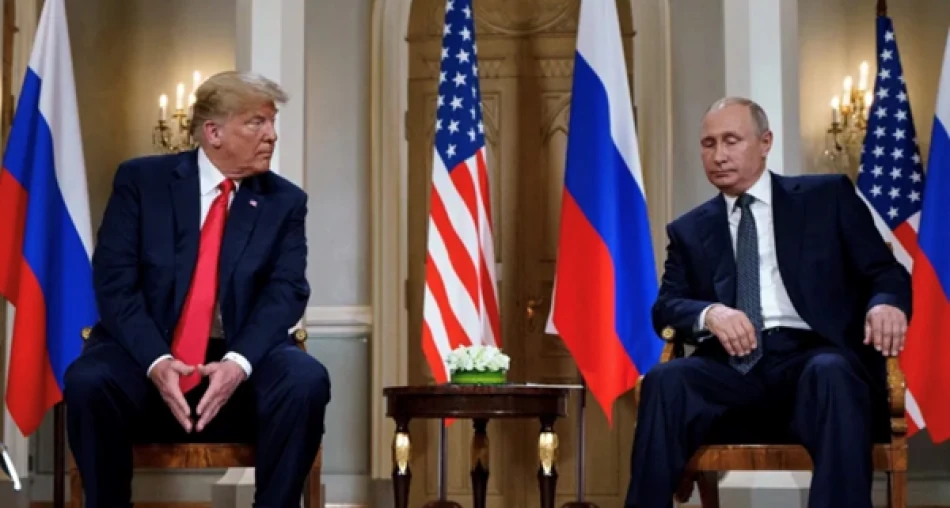
Highly Anticipated Trump-Putin Summit: Unveiling the Details
Trump-Putin Summit in Alaska Marks Desperate Pivot in Ukraine Peace Strategy
President Donald Trump will meet Russian President Vladimir Putin in Alaska on August 15th in a high-stakes diplomatic gamble to end the Ukraine war, marking a significant shift from multilateral negotiations to direct superpower diplomacy. The exclusion of Ukrainian President Volodymyr Zelensky from the talks signals a potentially controversial approach that prioritizes great power politics over Kyiv's sovereignty in peace negotiations.
Alaska: A Symbolic Choice with Strategic Implications
The selection of Alaska as the meeting venue carries deep historical resonance. The territory, sold by the Russian Empire to the United States in 1867 for $7.2 million, represents both nations' shared Arctic interests and geographic proximity across the Bering Strait.
Kremlin advisor Yuri Ushakov described the location as "completely logical," emphasizing that Alaska and the Arctic represent regions where both countries' economic interests intersect. His statement hints at broader discussions beyond Ukraine, potentially encompassing Arctic shipping routes, energy resources, and territorial claims that have gained strategic importance due to climate change.
Ushakov's invitation for Trump to visit Russian territory next suggests Moscow views this meeting as the beginning of a sustained diplomatic engagement, not a one-off negotiation.
Ukraine's Exclusion Raises Sovereignty Concerns
Zelensky's absence from the summit represents a fundamental shift in peace negotiation dynamics. The Ukrainian president has consistently advocated for trilateral talks, arguing that decisions made without Ukraine "will achieve nothing." This exclusion echoes historical precedents where great powers negotiated over smaller nations' futures without their direct participation.
Putin's conditional stance on including Zelensky—stating that "certain conditions" must be met—suggests Russia may be demanding preliminary concessions before agreeing to direct talks with Kyiv. This approach mirrors Moscow's broader strategy of treating Ukraine as a proxy in a larger US-Russia confrontation rather than an independent actor.
Trump's Credibility Test After Failed Campaign Promises
This summit represents a crucial test of Trump's diplomatic credibility. His campaign promise to end the Ukraine war within 24 hours has proven unrealistic, with multiple rounds of talks, phone calls, and diplomatic missions yielding no breakthrough during his early presidency.
The meeting occurs against the backdrop of a war that has fundamentally reshaped European security architecture and global economic relationships. Unlike Trump's previous diplomatic ventures with North Korea or his first-term Putin meetings, the stakes have escalated dramatically with NATO expansion, European energy security, and nuclear deterrence all hanging in the balance.
Historical Context: Echoes of Cold War Summit Diplomacy
The Alaska summit recalls the era of superpower diplomacy when US and Soviet leaders met to manage global tensions. However, unlike Cold War summits that typically aimed at crisis management and arms control, this meeting occurs during an active conflict where one participant is the aggressor and the other supports the victim.
The last Trump-Putin meeting occurred in 2019 during the G20 summit in Japan, before the current conflict transformed their relationship dynamics. Their 2018 Helsinki summit was widely criticized for Trump's perceived deference to Putin, creating domestic political challenges that may influence his approach this time.
Market and Geopolitical Implications
Financial markets will closely monitor any signals about sanctions relief, energy trade resumption, or territorial concessions. European allies, particularly those bordering Russia, will scrutinize whether Trump might trade Ukrainian territory for a ceasefire, potentially undermining NATO's Article 5 credibility.
The summit's timing also coincides with global attention on Arctic resources and shipping routes, suggesting discussions may extend beyond Ukraine to broader strategic competition in the region. Energy companies, defense contractors, and Arctic nations will all assess how any agreements might reshape regional power dynamics and economic opportunities.
 Layla Al Mansoori
Layla Al Mansoori







